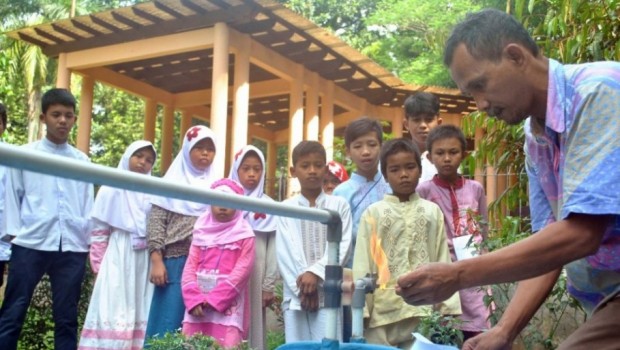
Berita Satu, Jakarta – Millenium Challenge Account-Indonesia (MCA Indonesia), through Green Prosperity Partnership Grant, in partnership with Hivos Consortium for “Investing in Renewable Energy for Rural, Remote Communities” project to develop biogas project for the communities in different regions.
This Programme is developed based on Sumba Iconic Island and Domestic Biogas programme and has been implemented by Hivos since 2009. The project location is in West Nusa Tenggara (Central Lombok, East Lombok, and North Lombok) and East Nusa Tenggara (East Sumba, Central Sumba, Southwest Sumba, West Sumba), and South Sulawesi (North Luwu, East Luwu).
According to the press release received by Investor Daily, Saturday (7/23), Domestic Biogas programme is a practice to operate biogas reactor as the local source of energy. More than harvesting the gas as the household source of energy, the programme’s beneficiary may also enjoy the benefit of biogas sludge (bio-slurry) or ready to use organic fertilisers.
“Other than for self consumption, this organic fertilisers are top sellers as it is proven to improve soil conditions which was previously damaged by the use of chemical fertilisers. Additionally, nutrients and organic fertilisers are more quickly absorbed by the plants. The plants are now healthier and the weight of each clump has multiplied,” uttered Saherudin, the residents of Sesait Village, North Lombok.
Each household normally operates a four cubic meter biogas reactor. In order to produce a biogas (methane), it takes 30 kgs of cow manures which may be supplied by two cows. It takes three days before the biogas is formed. Meanwhile, for the initial filling, it normally takes a week before biogas is ready for distribution. In West Nusa Tenggara, the biogas programme produced by cow manures initially was a follow-up of ‘A Million Cow Land’ programme launched by the provincial government of West Nusa Tenggara. The programme succeeded in increasing the cow population exceeding the initial target. As of the end of 2011, cow population in the province is recorded at 740 thousands while the target was 780 thousands cows.
However, the increase in cow population seems like to have a follow-up consequences that is greater risk in environmental degradation due to improperly managed cow manures. In a single day a cow would produce approximately 10 kg of cow manures. It means a population of 740 thousands cows would produce 7,400 tons of manures per day or 222,000 tons per month and 2,693,000 tons annually.
In addition, the administratives of North Lombok Regency is oriented toward an Energy Independent Village in which one of the Energy Independent Village indicator is the fulfillment of 60 per cent of energy required by the village community through local energy supply. Cow manures coupled with reactor construction, is believed to be one of the efforts of such orientation.
Suharto, a father of a child now admits that he has been enjoying the benefits of the use of biogas since 2015. In order to fufill his and his relative’s household gas needs, Suharto increased the capacity of his reactor to eight cubic meter. His calculation suggested that using biogas is much more profitable in comparison to using the LPGs.
aherudin, a resident of Sesait Village in North Lombok said that during the last four years he enjoys a better welfare as a farmer after decades of hard work in processing his limited farm lands. Since 2012, the 56 years old man has steadily freed himself from his dependency on chemical fertilisers. “The availability of organic fertilisers produced by his cattle has dramatically reduced the use of chemical fertilisers. It used to be, while he was still dependent on chemical fertilisers, he needed approximately 600 kilograms of organic fertilisers for each hectare of land. Today I need a maximum of 100 kg of organic fertilisers for each hectare of land. He, in fact, has reduced the use of the fertilisers due to the excessive growth of his plants,” uttered Saherudin after decades of sustaining utter hard work due to the thin conditions of the top soil. (es)
Source: http://www.beritasatu.com/industri-perdagangan/376077-mca-indonesia-kembangkan-proyek-biogas-di-sejumlah-daerah.html)


